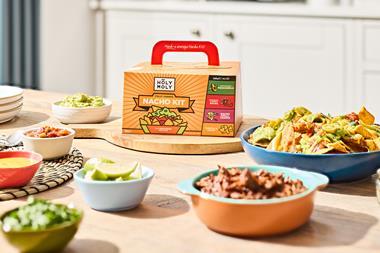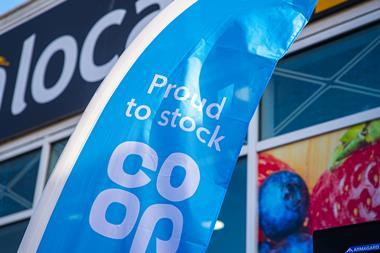‘Fundamentals remain tricky’ as the supermarket makes the best of a tough job, finds Jonathan Pritchard
Sainsbury’s will be disappointed that its trading statement coincided with further global market meltdown this Wednesday, plus the emergence of the Tchenguiz stock overhang – as the statement didn’t deserve the initial 12% fall in the share price that accompanied it. Like-for-like sales growth has accelerated (albeit due to inflation) and the consensus City forecast range is, at worst, intact. But the fundamentals remain tricky and the Oriel Securities’ view is that, while Sainsbury’s is making the best of a difficult job, it doesn’t mean the shares are worth owning.
City analysts were expecting something of a pick up in sales momentum, but the delivery of 4.3% like-for-like sales growth (excluding petrol) exceeded forecasts. What was not surprising, however, was that the acceleration was all down to inflation: Sainsbury’s is seeing lower volumes in its food business, with inflation at around 6%, and sounded less confident than Tesco that inflation had peaked. Non-food continues to go well for the company but it remains a small percentage of sales. Looking ahead to the rest of the financial year, we think volumes will remain in negative territory.
Although shelf-edge inflation is at very high levels in historic terms, input price inflation is even higher. Morrisons said as much in its trading statement and it feels to us that the sector is having to manage margin very carefully in order to simply deliver City forecasts. We think there is a risk the lower volumes at Sainsbury’s will make this process increasingly difficult to achieve and, as we approach what is certain to be a price/promotion-driven Christmas, the risk to forecasts is on the downside. Sainsbury’s is trying hard to push its value-for-money stance, but the bottom line is that the price element of that equation is slightly less competitive, both in reality and customers’ perceptions. That makes life difficult in this environment.
In share price terms, if Sainsbury’s was valued in the same way as the non-food sector, we would argue the pressure on forecasts was reflected by the valuation. But Sainsbury’s trades at a 50% premium and that has potential to contract materially. We understand why the food retail sector has been in vogue in these volatile markets but it is not as defensive as the market believes (Sainsbury’s disappointed pre-price war estimates by 33% in 1999) and there are risks with all the quoted industry members. It’s no safe haven.
Jonathan Pritchard is a partner at Oriel Securities.
Sainsbury’s will be disappointed that its trading statement coincided with further global market meltdown this Wednesday, plus the emergence of the Tchenguiz stock overhang – as the statement didn’t deserve the initial 12% fall in the share price that accompanied it. Like-for-like sales growth has accelerated (albeit due to inflation) and the consensus City forecast range is, at worst, intact. But the fundamentals remain tricky and the Oriel Securities’ view is that, while Sainsbury’s is making the best of a difficult job, it doesn’t mean the shares are worth owning.
City analysts were expecting something of a pick up in sales momentum, but the delivery of 4.3% like-for-like sales growth (excluding petrol) exceeded forecasts. What was not surprising, however, was that the acceleration was all down to inflation: Sainsbury’s is seeing lower volumes in its food business, with inflation at around 6%, and sounded less confident than Tesco that inflation had peaked. Non-food continues to go well for the company but it remains a small percentage of sales. Looking ahead to the rest of the financial year, we think volumes will remain in negative territory.
Although shelf-edge inflation is at very high levels in historic terms, input price inflation is even higher. Morrisons said as much in its trading statement and it feels to us that the sector is having to manage margin very carefully in order to simply deliver City forecasts. We think there is a risk the lower volumes at Sainsbury’s will make this process increasingly difficult to achieve and, as we approach what is certain to be a price/promotion-driven Christmas, the risk to forecasts is on the downside. Sainsbury’s is trying hard to push its value-for-money stance, but the bottom line is that the price element of that equation is slightly less competitive, both in reality and customers’ perceptions. That makes life difficult in this environment.
In share price terms, if Sainsbury’s was valued in the same way as the non-food sector, we would argue the pressure on forecasts was reflected by the valuation. But Sainsbury’s trades at a 50% premium and that has potential to contract materially. We understand why the food retail sector has been in vogue in these volatile markets but it is not as defensive as the market believes (Sainsbury’s disappointed pre-price war estimates by 33% in 1999) and there are risks with all the quoted industry members. It’s no safe haven.
Jonathan Pritchard is a partner at Oriel Securities.



![XOXO-Product-Shot[ALL FLAVOUR]-Sky-1920x1080](https://dmrqkbkq8el9i.cloudfront.net/Pictures/274x183/4/9/2/355492_xoxoproductshotallflavoursky1920x1080_806584_crop.jpg)





![XOXO-Product-Shot[ALL FLAVOUR]-Sky-1920x1080](https://dmrqkbkq8el9i.cloudfront.net/Pictures/380x253/4/9/2/355492_xoxoproductshotallflavoursky1920x1080_806584_crop.jpg)




No comments yet